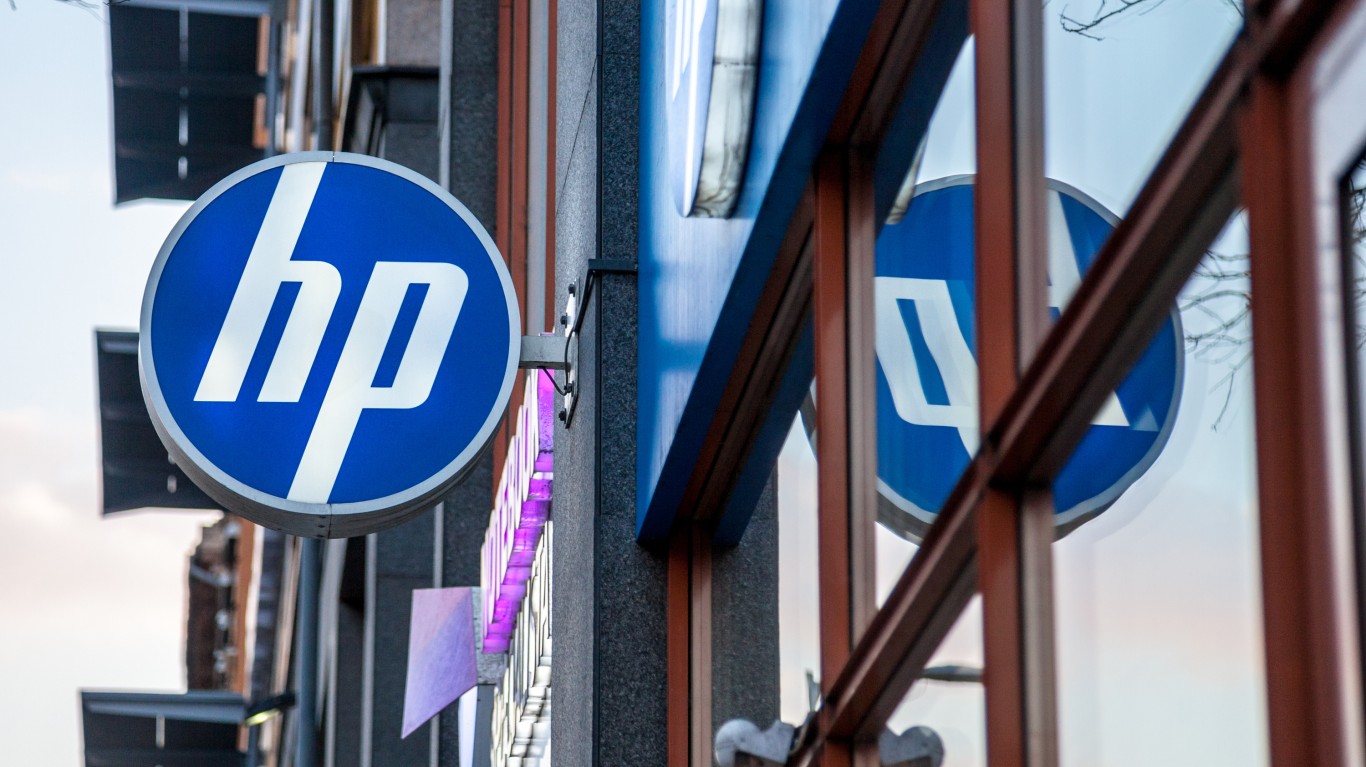
Before markets opened on Monday, Nordic American Tankers reported second-quarter revenue of $67.8 million, 4% higher than analysts’ consensus estimate, but down 22.2% sequentially and up 79.4% year over year. Earnings per share (EPS) of $0.13 were a penny below first-quarter earnings but up from a loss per share of $0.02 in the year-ago quarter. The tanker company announced a quarterly dividend of $0.13, down from the prior quarter’s dividend of $0.15. Shares traded up 5.3% shortly after Monday’s opening bell.
Best Buy, Big Lots and Nio are on deck to report quarterly results before U.S. markets open on Tuesday. No notable reports are scheduled for release Monday afternoon.
Here is a look at what analysts expect when these two companies release quarterly results after U.S. markets close on Tuesday.
Hewlett Packard Enterprise
Enterprise-level hardware and software maker Hewlett Packard Enterprise Co. (NYSE: HPE) has seen its share price improve by about 4.1% over the past 12 months. Since the beginning of the year, shares have gained 6.5%.
The company’s AI segment accounted for 3.8 percentage points of a 12.2% net revenue increase in the first quarter of the fiscal year. In the second quarter, net revenue rose by 8.1%, and AI contributed 1.9 points to the increase. Not great, but better than the negative contributions in the second quarter from the hardware side of the business. There are a lot of questions that HPE needs to address.
Analyst sentiment is only moderately bullish, with 13 of 22 brokerages having a Hold rating and eight putting a Buy or Strong Buy rating on the stock. At a recent share price of around $16.60, the upside potential based on a median price target of $18.00 is 8.4%. At the high target of $21.00, the upside potential is 26.5%.
For the company’s third quarter of fiscal 2023, analysts expect to see revenue of $7 billion, which would be up 0.3% sequentially and by 0.7% year over year. Adjusted EPS are forecast at $0.47, down 10.6% sequentially and down a penny year over year. For the full fiscal year ending in October, analysts are looking for adjusted EPS of $2.11, up 4.5%, on sales of $29.28 billion, up 2.7%.
Hewlett Packard Enterprise stock trades at 7.9 times expected 2023 EPS, 7.8 times estimated 2024 earnings of $2.13 and 7.3 times estimated 2025 earnings of $2.29 per share. Its 52-week trading range is $11.90 to $18.14, and the company pays an annual dividend of $0.48 (yield of 2.89%). Total shareholder return over the past year is 15.75%.
HP
PC and printer maker HP Inc. (NYSE: HPQ) has added nearly 15% to its share price over the past 12 months. The stock posted a 52-week high in mid-July but has dropped by about 9.7% since then. That high came the same day after Gartner reported that the nearly two-year decline in PC sales had slowed and that shipments may have reached their low point. The improvement was attributed to inventory reduction and a “gradual” increase in demand. Weakness in the global economy, however, then took center stage.
Analysts remain cautious on the stock. Of 18 brokerages covering it, 12 have Hold ratings, while just one has a Strong Buy rating and two more have rated the stock a Buy. At a share price of $31.00, the stock is trading at its median price target. At the high price target of $40.00, the upside potential is 29%.
Revenue in the company’s third quarter of fiscal 2023 is forecast to come in at $13.4 billion, up 3.8% sequentially but down 8.6% year over year. Adjusted EPS are forecast at $0.86, up 7.3% sequentially and 17.3% lower year over year. For the full fiscal year ending in October, analysts anticipate EPS of $3.37, down 17.4%, on sales of $54.43 billion, down 13.6%.
HP stock trades at 9.2 times expected 2023 EPS, 8.7 times estimated 2024 earnings of $3.56 and 8.0 times estimated 2025 earnings of $3.85 per share. The 52-week trading range is $24.07 to $33.90. HP pays an annual dividend of $1.05 (yield of 3.40%). Total shareholder return for the past year is negative 7.27%.
Originally published at 24/7 Wall St.
Sponsored: Tips for Investing
A financial advisor can help you understand the advantages and disadvantages of investment properties. Finding a qualified financial advisor doesn’t have to be hard. SmartAsset’s free tool matches you with up to three financial advisors who serve your area, and you can interview your advisor matches at no cost to decide which one is right for you. If you’re ready to find an advisor who can help you achieve your financial goals, get started now.
Investing in real estate can diversify your portfolio. But expanding your horizons may add additional costs. If you’re an investor looking to minimize expenses, consider checking out online brokerages. They often offer low investment fees, helping you maximize your profit.






